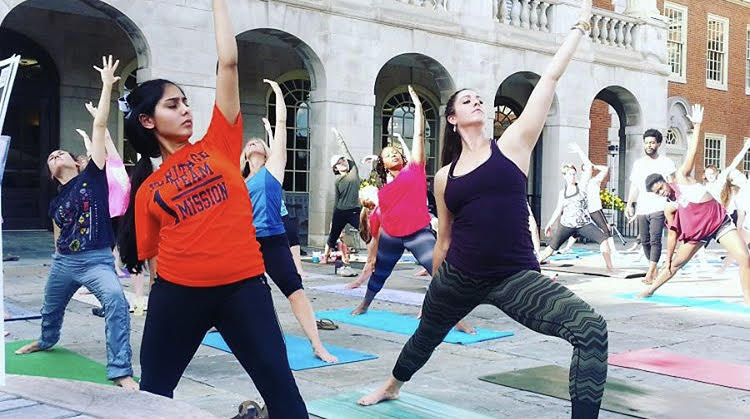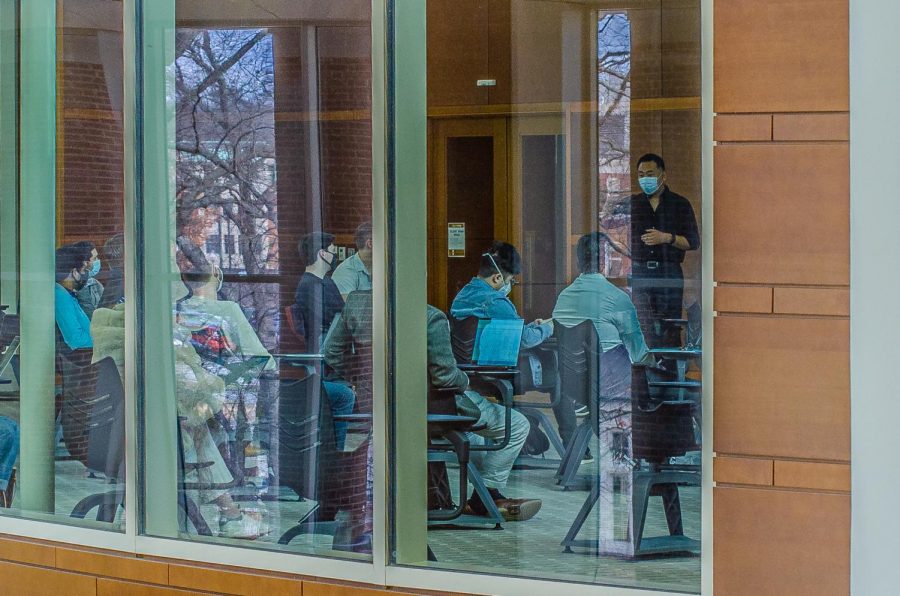Well, it’s officially that time in the semester again. It’s the “not-quite-midterms-yet-but-also-there-are-four-exams-shoved-into-a-three-day-period-before-the-drop-date” point, and it is safe to say that the student body is feeling the pressure. Balancing academics, extracurriculars, finances, health, relationships and sleep can be a feat so overwhelming that one might consider chopping off all of her hair and pulling a Gone Girl. (It’s me. I’m her.) Before anyone reaches this point, though, it is important to recognize the warning signs of stress and to know how to combat it before it takes a physical or mental toll on the body.
If you paid even the tiniest bit of attention in your HES 100 lecture, you would remember that health is comprised of eight different wellness dimensions, ranging from the physical and emotional to the social and financial. The string that holds this all-encompassing bundle of wellness together is not a foreign idea or complex chemical reaction. It is a tool that already exists in each and every one of us. That tool is mindfulness.
Mindfulness is a term that refers to being present and aware of your body and thoughts without being overwhelmed or overstimulated by the outside world. Easy enough, right?
What exactly does this look like, though? For someone not quite familiar with mindfulness and its positive impact on overall health, employing it in daily life may seem like an infeasible task.
If you happen to be one of those skeptics, try this. Breathe in for four seconds. Hold your breath for seven. Exhale for eight. Be aware of how the air feels as it fills your lungs and how your chest rises and falls. Boom. Mindfulness.
The fact of the matter is, almost everyone has practiced some form of mindfulness without even realizing it. Yoga? Mindfulness. Prayer? Mindfulness. Falling into a trance while watching the newest season of Sex Education and being blissfully unaware of your surroundings for a few hours? Not exactly mindfulness, but you get the idea.
The thing that is so amazing about introducing mindfulness techniques into your life is that they can be done in your own time and by your own accord. As college students, finding a spare second to eat breakfast can be difficult, so it is hard to visualize what introducing an entirely new habit to a daily routine would look like. Thankfully, the university has taken it upon themselves to make mindfulness easily accessible to all.
Whether you are a beginner in the world of mindfulness or a seasoned pro, the university provides a number of resources to help you become the most self-aware student you can be. Free yoga classes are offered in Reynolds Gym every day of the week. Just check online for specific times and room locations. The counseling center has links to breathing analysis and body awareness exercises on their main website. The Chaplain’s Office offers a course called “Koru Mindfulness,” a four-week class that meets for 75 minutes once a week and teaches students about mindfulness techniques. Just check out the Office of the Chaplain or reach out to the Counseling Center to register.
Introducing mindfulness into one’s daily schedule improves mental health and physical wellbeing. It offers a sense of grounding and belonging. It is constant. Mindfulness is always with you, waiting to be engaged. Why not take advantage of the natural gift of tranquility and self-reflection that exists within you already?














